It started just two nights ago. After the rains, I could hear a few Copes grey treefrogs (Hyla chrysoscelis) calling nearby, including one that had to be in the backyard. I was checking on other things, so it took me just a couple of minutes to get to the approximate location, and by that time, she’d achieved her goal.

Seen here in the residual water atop one of the rainbarrels, this is a mated (more or less) pair; the male will stay clasped to the female until she finds her choice of pools to deposit the eggs within, whereupon he will fertilize them when they emerge. I was a bit leery of this pose myself, because this is not the place where I wanted eggs placed, knowing the water there will seep out within a day – there are actually drain holes to prevent this pooling, but the debris that you see tends to plug them temporarily. Still, while the frogs were sitting there, I did a better portrait.

Boy, the joy and excitement of impending parenthood, eh? Can’t you just feel the love?
A short while later when The Girlfriend had come down, the happy couple was nowhere to be seen, relieving me a little – since they weren’t even visible on the sides of the barrel or anything nearby, I figured they’d started making their way towards the pond in the backyard only a handful of meters off, a proper and inviting nursery with deep water, shade, and plants, that has hosted numerous amphibian broods in the past.
But no. The next day, I glanced at the pond to see if I could spot any eggs, finding nothing, but then looked at the overflow barrel next to the rainbarrel that the frogs had been on the night before.
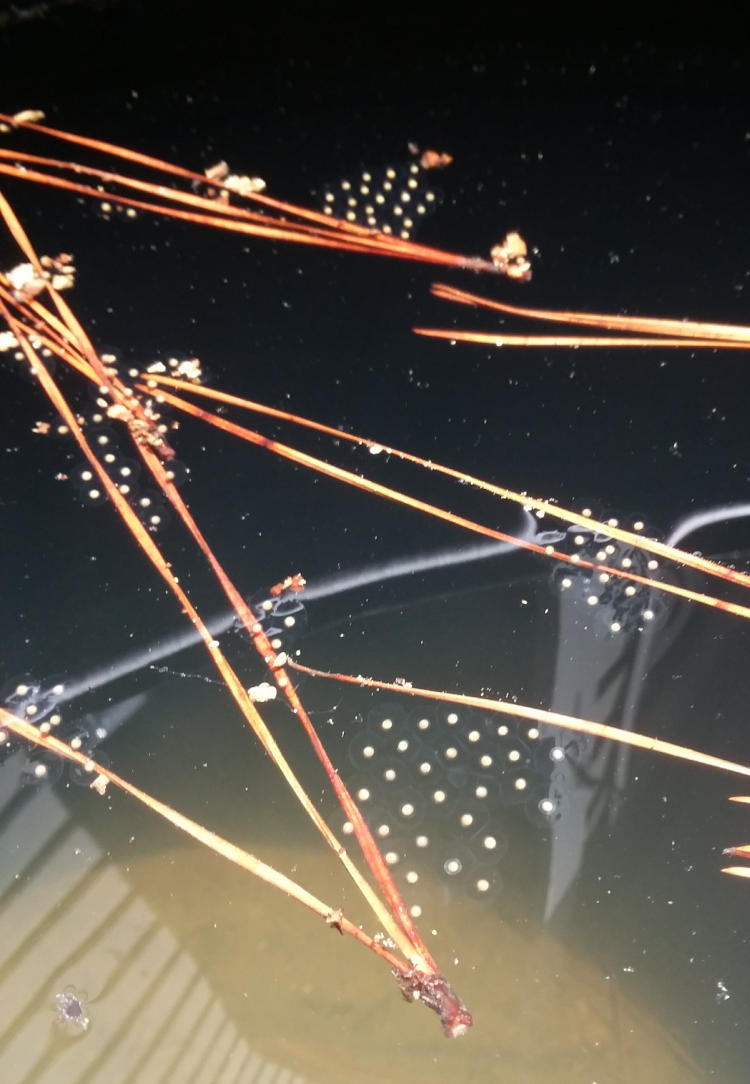
This was a meter or less from where I photographed the happy couple, in use because the drought made it necessary to collect as much water as possible when it did rain, but not at all the ideal habitat for little froglets. [Sigh]
That was taken with my [blerk] smutphone, but by the time I got free enough to do a session with a proper camera, it was clouding over again, so I collected a handful of eggs in the macro aquarium. By then they were already visibly developing.
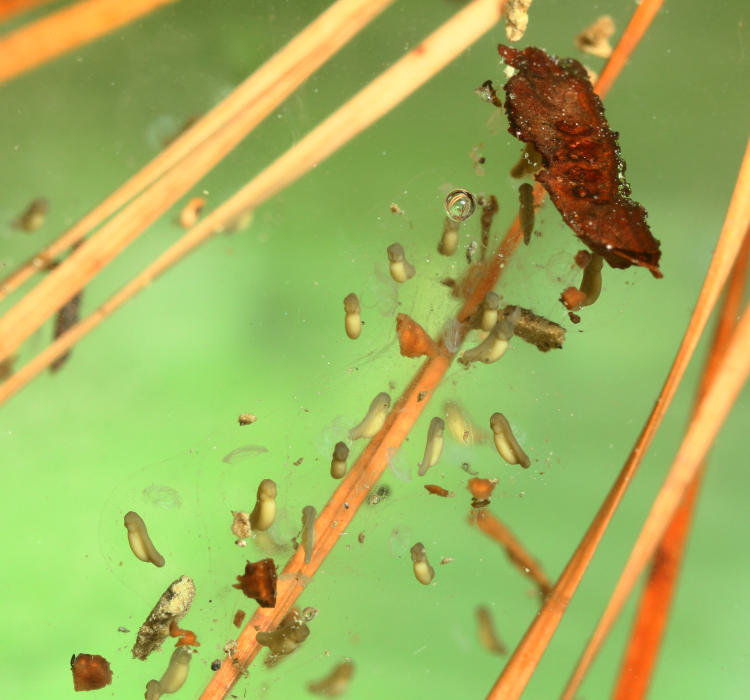
To give you a time frame, the images of the parent frogs were taken about 9:30 PM. and they had disappeared a little later on and were clearly not laying eggs by then. The eggs in the barrel were taken the next day at 1:30 PM, about fifteen hours later. Then I collected these in the aquarium, taking the photos at 8:00 PM, somewhere less than 22 hours after being deposited.

This is now with the reversed 28-105; the actual length of the pre-tadpole is roughly 2mm. I was on the back porch with a focusing LED lamp, the slave strobe, and varying backdrops, also trying for a little dark-field effect to see if I could bring up any internal details better, which didn’t work very well. But this one, at least, showed the edges of the transparent egg membrane, itself in a jelly-like substance that helped them to adhere both to each other and to whatever floating stuff could be found, which around here is pinestraw – always pinestraw.
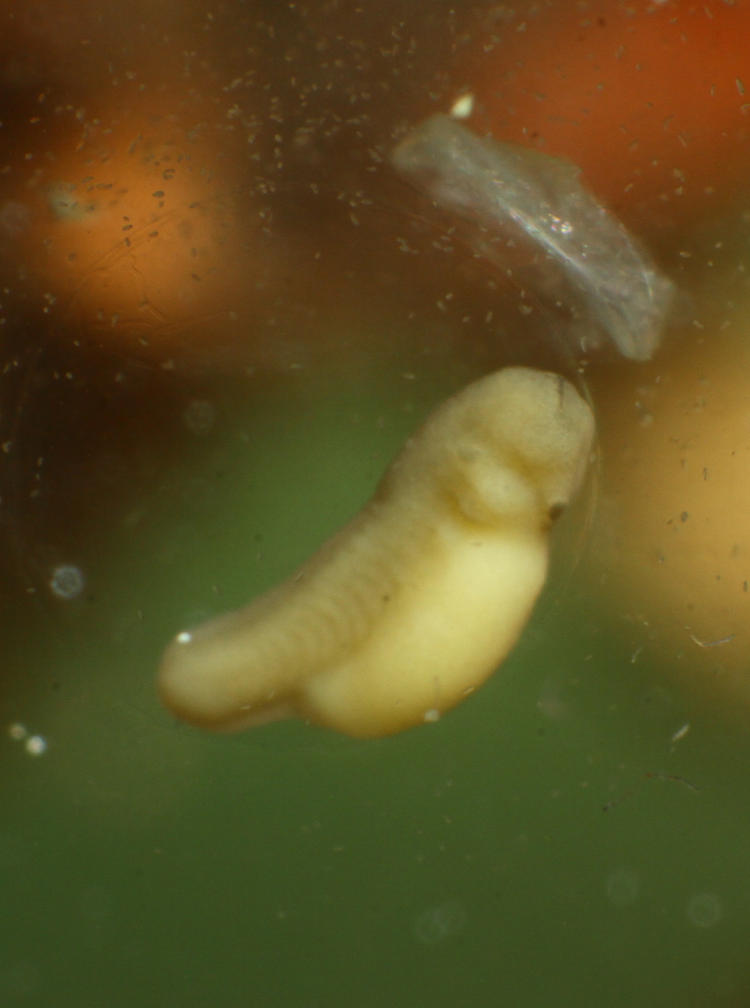
With a change in light angle, we can make out some details, but of what, I’m not going to commit to. Ribs? Developing eyes? Is that dark line at top the actual mouth opening? The alimentary canal is the first thing to develop, fetuses (of most species) starting out only as a tube, so I know the mouth exists, but I’m not sure that’s it. And the reason that I tried a little dark-field backlighting was that I didn’t have an X-ray machine. I know, I know – “And you call yourself a nature photographer?” I’m working on it – maybe for my birthday.
After a few detail shots, I transferred everything I could snag from the barrel, and most of these, into the pond, retaining about six in the aquarium to monitor.
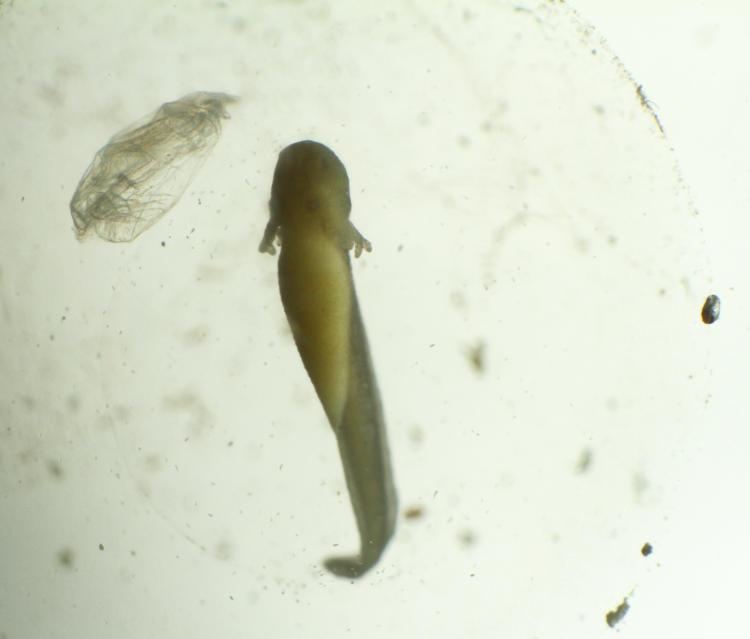
This is from 2:30 PM today, over 18 hours past the immediately previous images and 41 hours after finding the newlyweds. It would be easy to believe those are forelegs, if you forget that tadpoles have no legs at all for several days after hatching, and the hindlegs develop first anyway; those are likely gills/lungs, still semi-external for a short while. This one is still in the egg membrane, but hatched only a half hour after I got these pics.
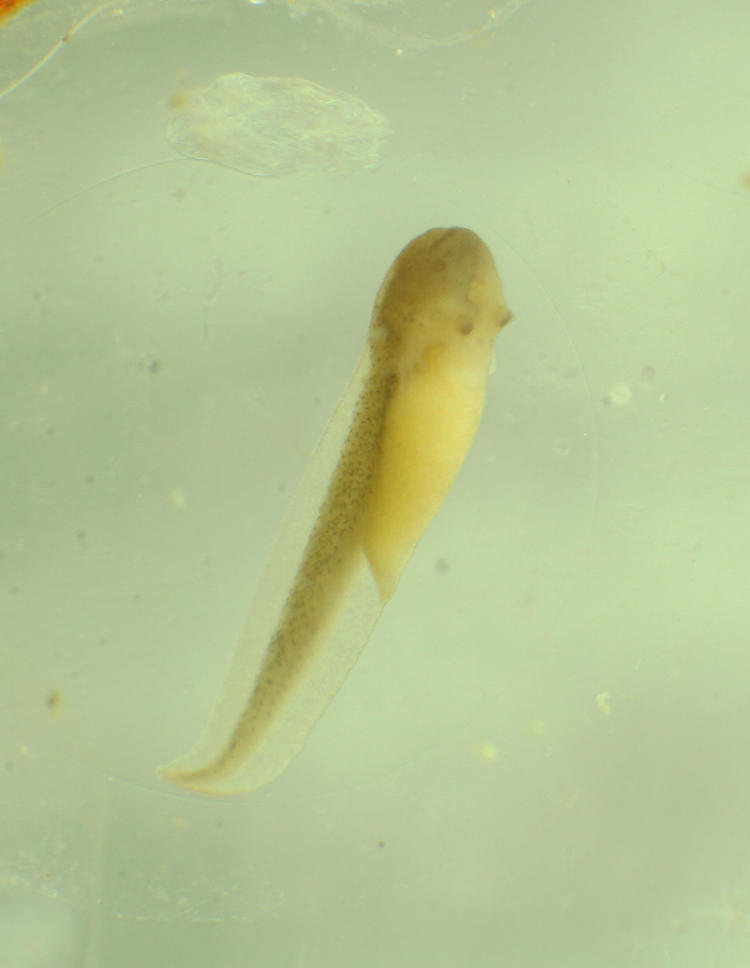
This shows the transparent nature of the outer skin, mostly around the tail, but we’re going to see more detail in just a moment.
Because at the same time that I got these, I checked the barrel and found a few tadpoles (that I’d apparently missed) already swimming around within and looking distinctly like tadpoles, so I collected a couple for the session.

Why these seem so much more developed than their brethren, I cannot say – to my knowledge, the conditions weren’t significantly different, but perhaps this is evidence of another brood that I had no idea was there. Only a day or so older, if they were. But we can just make out the transparent outer skin surface, realizing that the pigment sits well below the surface. I always get a kick out of this view, because to the eye, they look black – maybe a hint of detail through the belly, but from this angle, black. The mottled-brown-with-gold-flecks coloration only shows at high magnification.
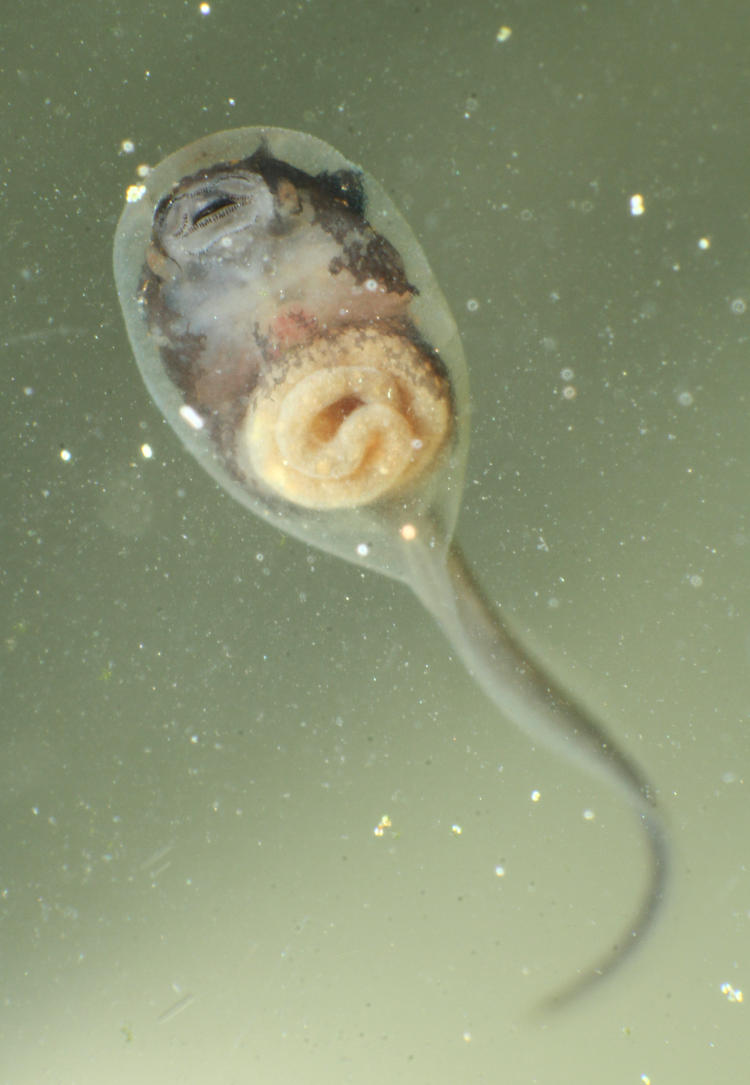
And a belly shot – we can see that it’s been eating fine, at least, and that transparent outer shell is highly visible now. I’ve done closeups of those lips before; to the best of my knowledge, those dark markings are nerve endings to help it find food.
[In that linked post, I avow that tadpoles don’t have gills, but have since heard that they do. Except, I’ve never seen a gill opening like fish have, so I’m not entirely sold on this, plus I routinely see them surface apparently for air, so, yeah…]
I put some pond water in the aquarium to provide more food, and am retaining a handful to see how they develop, so more pics may be along in the next few days. It’s still just as hot on the porch as it is in the open, but it’s shaded at least, so while I still sweat like a pig getting these shots, at least I don’t get sunburned.




















































